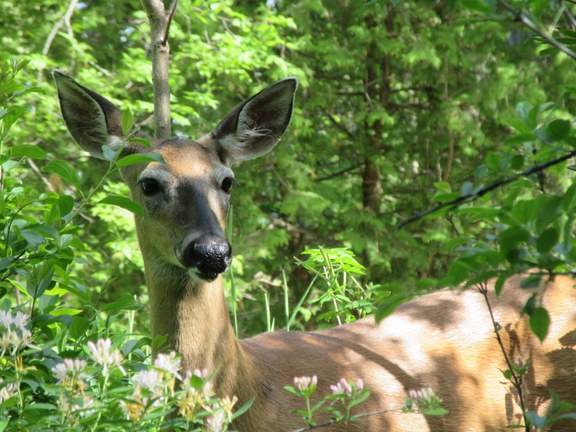Analysis of historic and current forest inventories reveals regenerative management strategies for Eastern forests
Problem
How can scientists and land managers better address the ecological consequences of increasingly dense forests?
The densification of forests by undesirable trees in the eastern United States, which is often blamed on selective browsing by white-tailed deer, threatens the sustainability of many historically important tree species.
Findings
Despite conflicting trends, researchers found that deer browsing has not controlled tree density on a landscape level because certain tree species, whether preferred by deer or not, generally have increased in eastern forests. Exceptions are the fire-adapted species such as oak, hickory, and pine, which have suffered more from a lack of fire.
The team analyzed U.S. Forest Service data of more than 1,000 forest inventory areas in 26 states east of the Mississippi River, calculated changes in tree stocking and species, and compared deer browse preferences with trends in species composition from current and historical tree surveys from as early as 1620.
Impact
This research may greatly change how scientists and forest managers view the role of deer in the ecology of eastern forests, redirecting management goals to include reducing the overstory density of undesired tree species and restoring natural fire cycles that help promote the historically dominant trees in the eastern United States. A reduction in deer density may help promote some desirable tree species but may also exacerbate the densification problem.
Related Research Area: Environmental Resilience
Research Credit
Team
- Marc Abrams, Brice Hanberry
Participating Departments
Partner
- U.S. Forest Service
Competitive Funding
- U.S. Forest Service
Federal and State Appropriations
- USDA NIFA Hatch Project PEN04658, Accession #1016433
Emerging Discoveries
Published Research
Does white-tailed deer density affect tree stocking in forests of the Eastern United States?
- Hanberry, B. B., & Abrams, M. D. (2019). Does white-tailed deer density affect tree stocking in forests of the Eastern United States? >Ecological Processes, 8(1), [30]. https://doi.org/10.1186/s13717-019-0185-5
Emerging Discovery
Office for Research and Graduate Education
Address
217 Agricultural Administration BuildingUniversity Park, PA 16802-2600
- Email agresearch@psu.edu
- Office 814-865-3136
Emerging Discovery
Office for Research and Graduate Education
Address
217 Agricultural Administration BuildingUniversity Park, PA 16802-2600
- Email agresearch@psu.edu
- Office 814-865-3136




